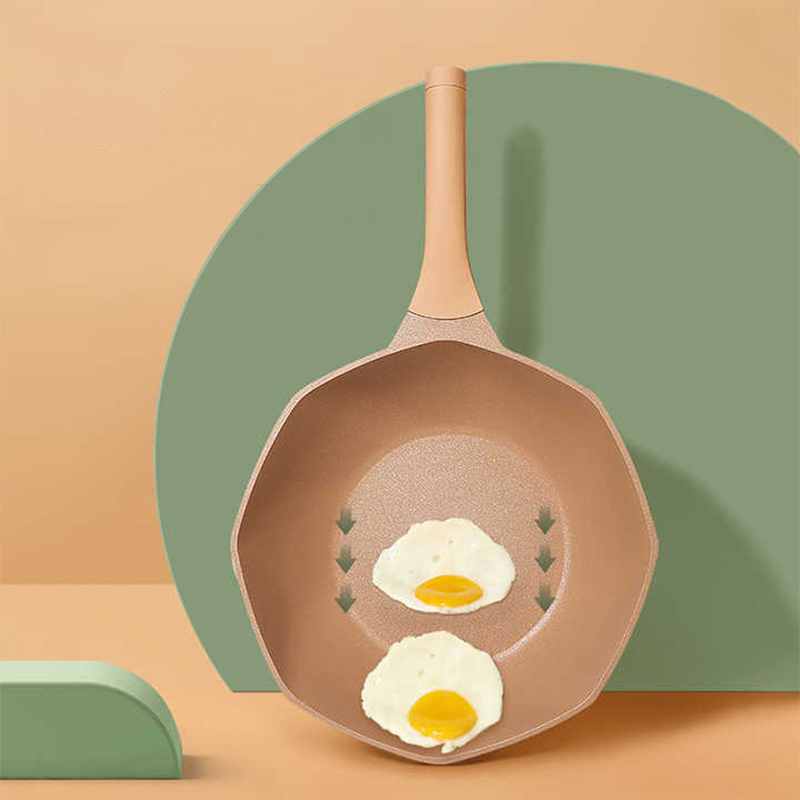2025-09-19
Rising Interest in Titanium Cookware
Titanium Cookware is attracting increased interest among both household users and culinary professionals. The material is valued for its strength and lightweight nature, allowing pots and pans to remain durable while reducing the effort required for handling. Many users note that titanium designs provide steady cooking results, supporting a wide variety of recipes from everyday meals to more refined dishes. The combination of strength, lightness, and balanced heating continues to shape how Titanium Cookware is being integrated into modern kitchens.
Role of Cookware Factory Innovations
The development of Titanium Cookware is strongly supported by Cookware Factory operations. Factories are using advanced forging and pressing techniques to ensure even construction across surfaces and edges. This precision benefits heat distribution and provides consistency in performance. Improvements in polishing and finishing methods are also making titanium items more appealing for both functional and aesthetic purposes. Cookware Factory production lines are therefore contributing to the expansion of this category by refining manufacturing standards.
Comparison with Die-Cast Aluminum Cookware
Die-Cast Aluminum Cookware remains a well-established product group that appeals to many consumers for its affordability and rapid heating ability. Compared to titanium, aluminum is easier to shape but can be prone to wear over time. Titanium Cookware, on the other hand, emphasizes durability and long-term stability. Both categories serve different needs, and many distributors showcase them side by side, allowing buyers to choose according to their cooking habits and lifestyle requirements.
Relationship to Iron Pots and Pans
Iron Pots and Pans continue to hold a firm place in kitchens across cultures. Known for their heat retention, they are often compared to Titanium Cookware in discussions of resilience and performance. While iron items require regular seasoning to protect their surfaces, titanium offers a more maintenance-friendly alternative. Users who appreciate traditional methods often keep iron products, while others seeking reduced upkeep may look to titanium solutions.
Connection with Non-Stick Kitchen Pans
Non-Stick Kitchen Pans are another important category within cookware markets, designed to simplify cooking and cleaning. While Titanium Cookware can incorporate non-stick layers, it is also valued in its uncoated form for offering a surface that resists sticking when handled properly. This balance between coated and uncoated titanium options gives consumers flexibility. Those who enjoy searing foods at higher temperatures often turn to titanium items, while others may continue to prefer the convenience of non-stick alternatives.

Market Shifts and Consumer Preferences
Titanium Cookware has been positioned as a solution that bridges lightweight design with resilience. Cookware Factory production has adapted by integrating titanium into diverse product lines, while still maintaining emphasis on Die-Cast Aluminum Cookware, Iron Pots and Pans, and Non-Stick Kitchen Pans. This balance demonstrates how the cookware sector responds to a wide range of consumer expectations.
Broader Culinary and Cultural Influence
Titanium Cookware is also gaining recognition in cultural contexts. In family kitchens, it represents a practical investment for long-term use. In professional kitchens, it provides a reliable option for chefs managing multiple cooking techniques throughout the day. Its ability to fit into both domestic and commercial environments strengthens its relevance.
Conclusion
Titanium Cookware is establishing a clear role within the broader cookware landscape. Supported by advances in Cookware Factory production, it stands alongside Die-Cast Aluminum Cookware, Iron Pots and Pans, and Non-Stick Kitchen Pans as part of a diverse market offering. Its lightweight structure, resilience, and versatility contribute to its growing appeal among households and professional chefs.